
Who says that a vegetable garden has to be laid out in rectangular or square raised beds or in neat little rows? Who says that you have to choose between a beautiful ornamental garden and growing food?
A mandala garden is one idea that lets you think outside the box. With a garden laid out using a beautiful layout, mandala gardens can provide plenty of visual appeal, as well as delicious produce.
In this article, we’ll explore the idea of a mandala garden in a little more depth. We’ll look at why creating one could be a good idea.
Next, we’ll look at some design ideas and inspirational examples. We’ll talk about where you might position a mandala garden, then give you a step by step guide to creating your own.
By the end of this article, you should have a much clearer idea in your head about how you could create a mandala garden where you live.
What is a Mandala Garden?
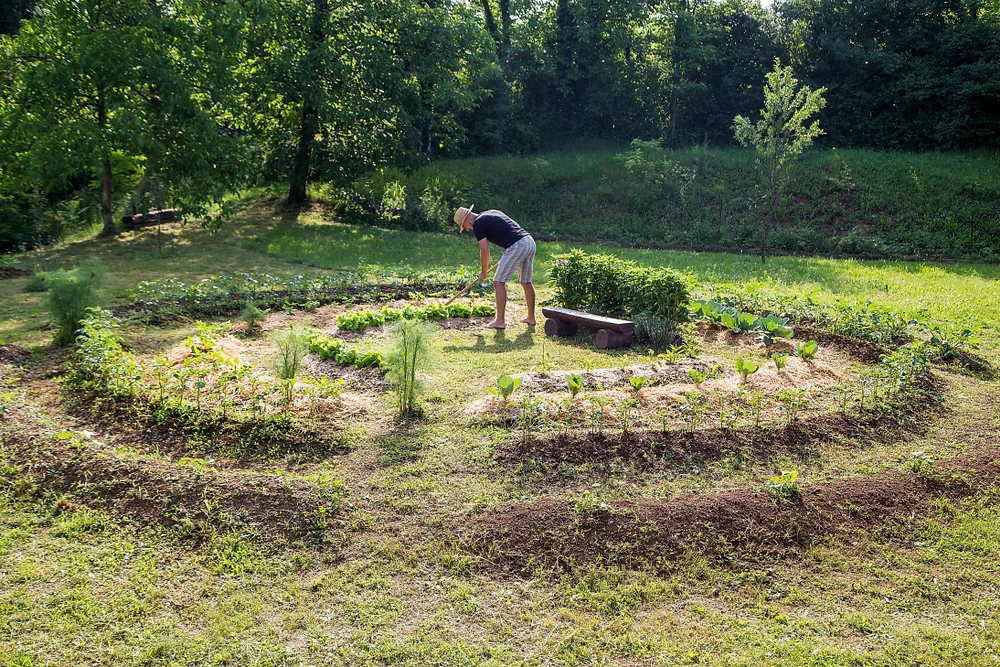
A mandala garden is simply a garden in broadly circular form. It can include a few, simple raised beds or in ground growing areas, or be much more elaborate in design.
Mandala patterns are geometric shapes laid out to create a pattern or symbol that, spiritually speaking, traditionally represents the universe, or the gateway to a spiritual journey. They are used as tools for meditation, relaxation, for focussing the mind, or for contemplation of creation.
They can have a central hub, with a pattern radiating outwards like a wheel or starburst. Sometimes, they have a series of concentric rings. At other times they can be spiral forms. Or they can have more intricate curving or floral designs.
A mandala garden takes on the beautiful patterns of these traditional emblems or designs. Whether or not you are interested in the spiritual element of the design, the idea of a mandala can form a useful design basis to help us make the most of the space and resources of our gardens.
A mandala garden can be a way to think about our gardens a little differently and move beyond more prosaic and traditional designs.
In a mandala garden, the traditional patterns are created by laying out a series of beds and pathways to create the desired pattern. The idea is to create a series of growing areas that are functional as well as beautiful.
Why Create a Mandala Garden Design?
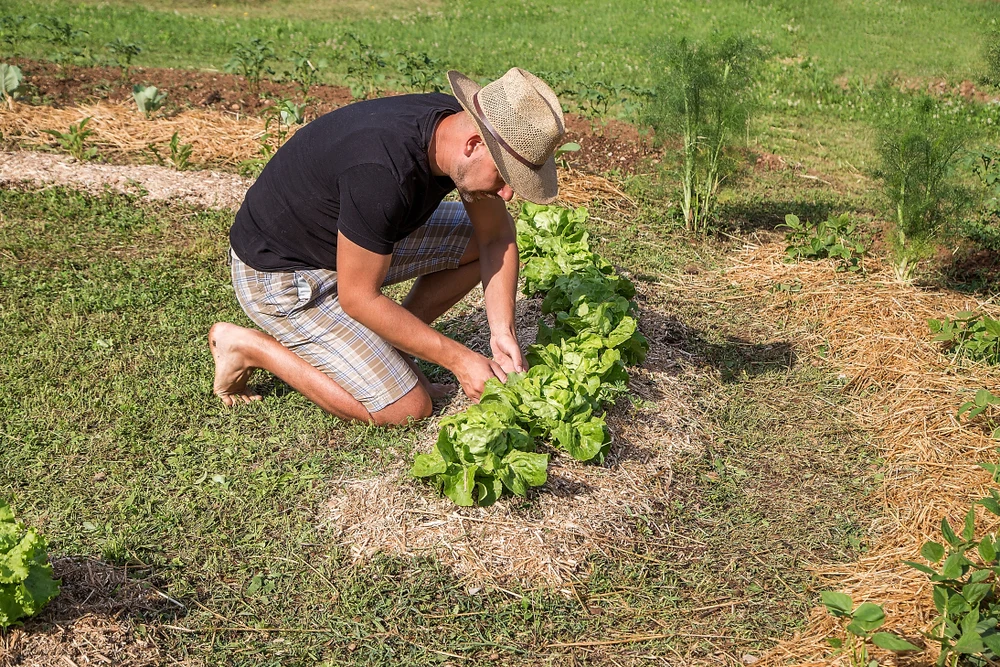
There are a number of reasons to create a mandala garden design. One important thing to remember is that this type of garden is not only about appearance.
A mandala garden can of course be a truly beautiful space. But more than that, it can be very practical, and help you make the most of the space you have available.
Mandala gardens:
- Allow you to create a series of organic shapes that are pleasing to the eye, but which also help to integrate your garden design into the surrounding natural environment.
- Create a calming garden that you want to spend time in.
- Have raised beds or in ground growing areas which can easily be reached and tended without stepping on them and compacting the soil.
- Maximise ‘edge’ – the most productive part of any ecosystem. Maximising edge can help to increase the yield that you can achieve from your organic garden.
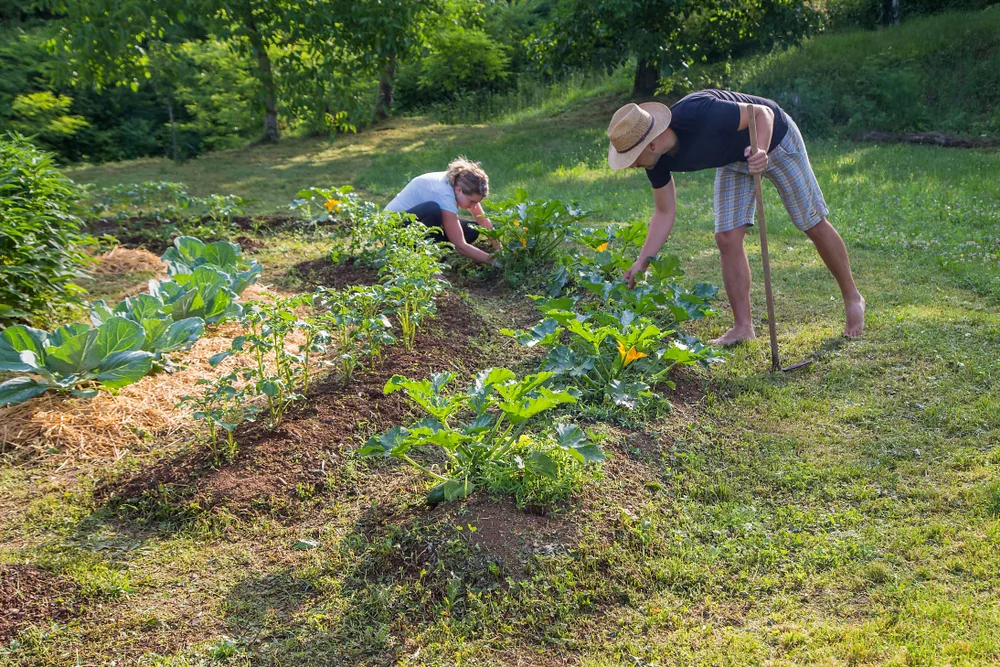
Mandala Garden Design Ideas
Mandala gardens come in a range of enticing patterns, and can be made in a number of different sizes. The many and varied mandala garden design ideas mean that it is easy to create bespoke and unique gardens for where you live.
Here are some design ideas you might like to consider:
Concentric Circles Mandala Garden
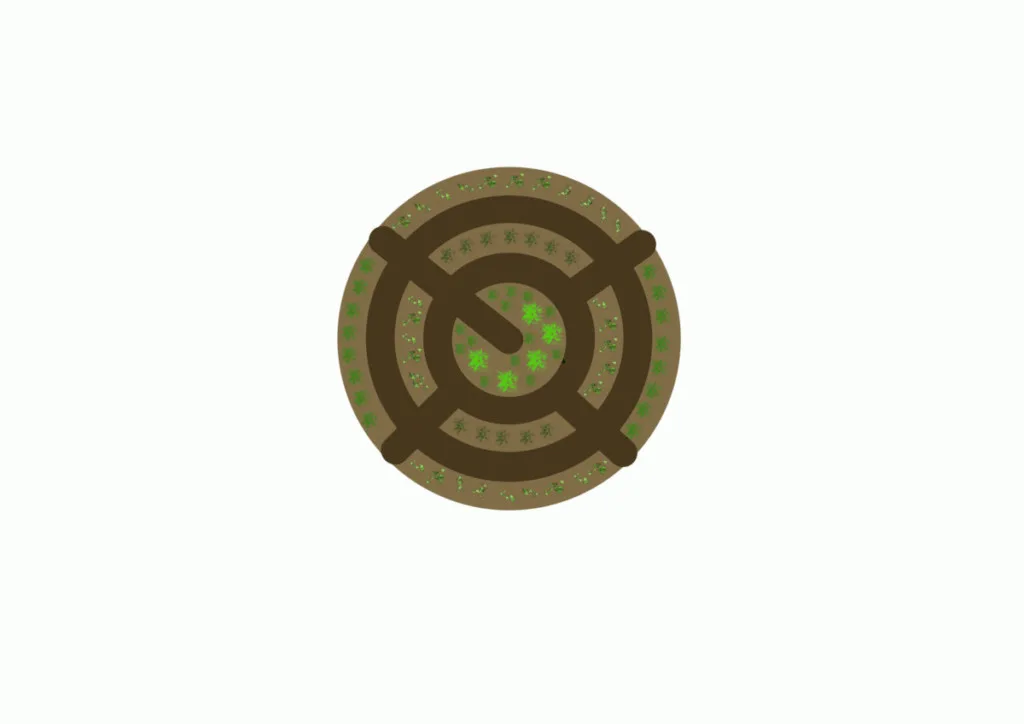
One design for a mandala garden involves creating a central circular growing area or a central feature surrounded by a series of concentric circles, which can be partitioned into distinct beds with any number of pathways leading to the centre.
The heart of the mandala can be a simple, circular keyhole type bed, a tree, a seating area, a water feature or pond, or a piece of garden art, for example.
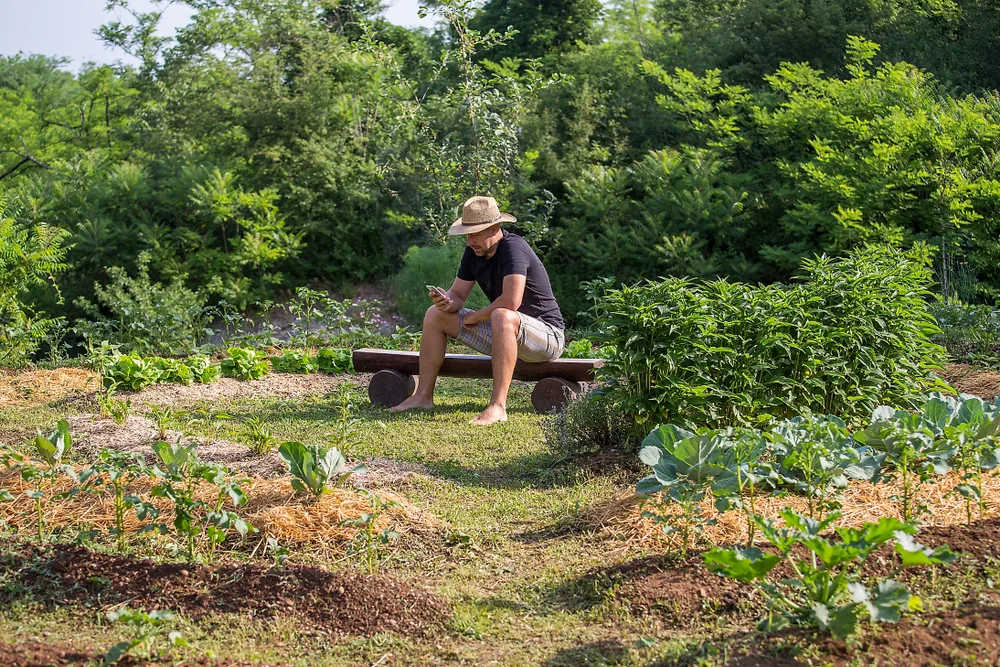
Check out this interesting example:
And here is another image that shows a simple mandala garden design of this type.
Wheel-Like Mandala Garden
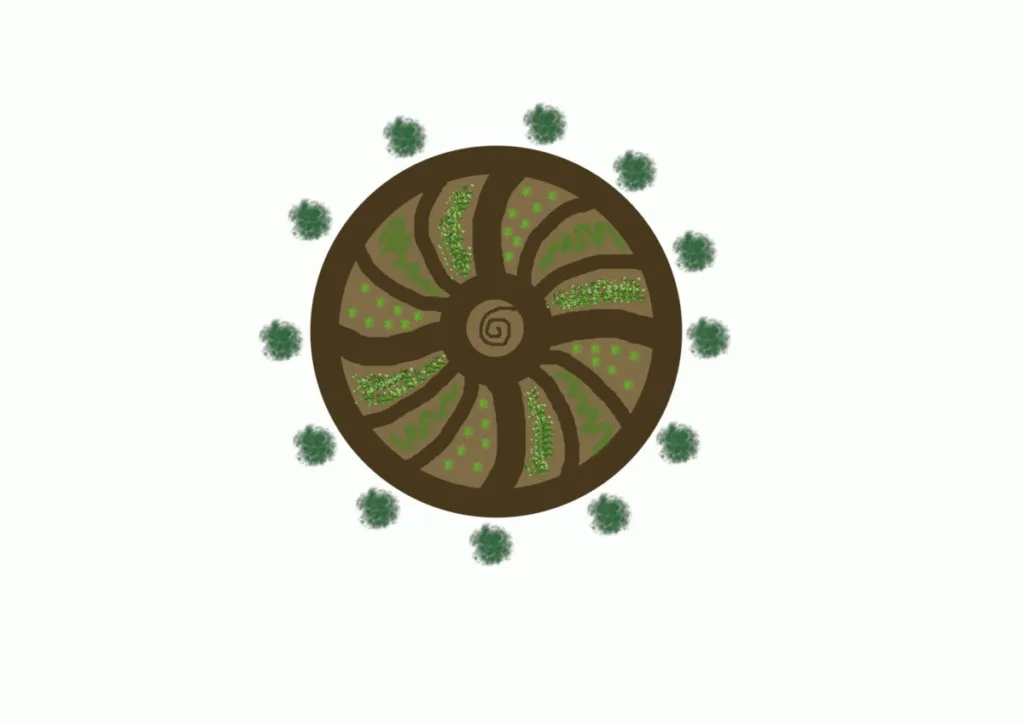
Another common type of mandala garden involves creating beds between pathways that radiate out from the centre like the spokes of a wheel. The paths can be straight, or curving, to create a different effect.
Depending on the size of the garden, additional paths may also run around the circle between the spokes. The key thing to remember is that the all beds should be reachable from either side, so you do not have to step on and compress the soil/ growing medium.
The mandala garden at Le Ferme du Bec Hellouin in Normandy, France, is one excellent example of this type of design.
Spiral Form Mandala Garden
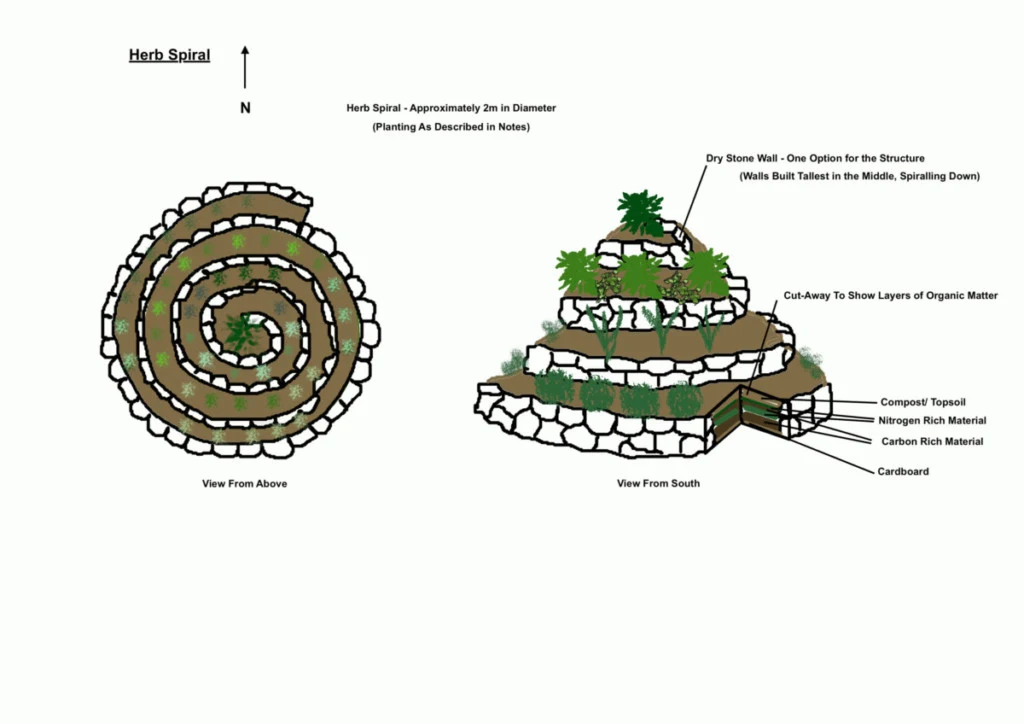
Another option involves creating a spiral form garden. The spiral form mandala garden is an extension of the idea of a herb spiral.
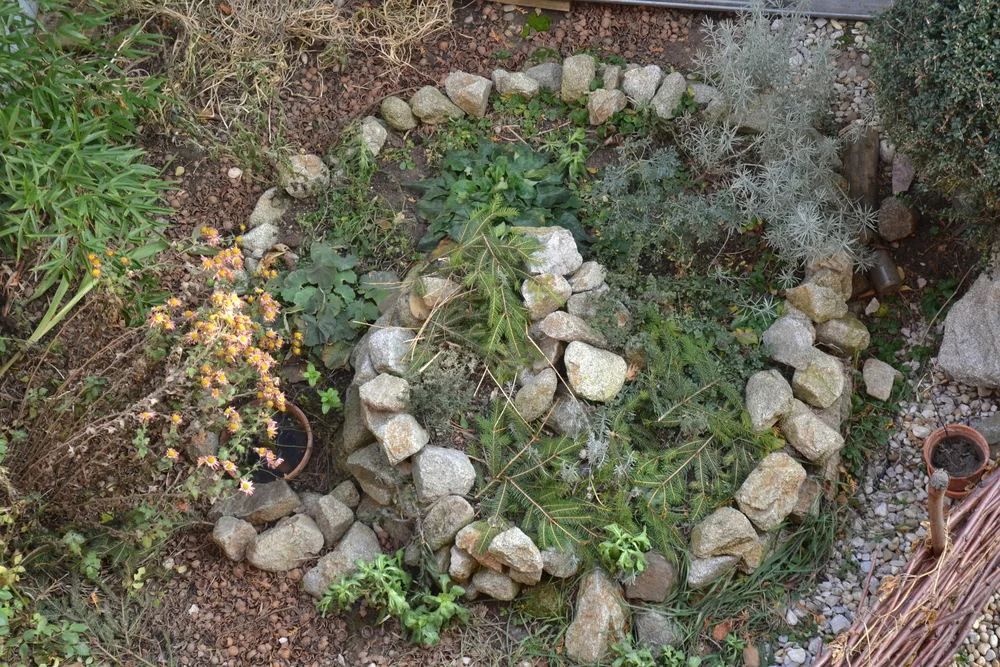
This can be another beautiful way to incorporate patterns from nature in your garden design. Remember, you could also incorporate a three-dimensional element into your garden design.
Small mandala gardens could not only create a spiral form using a path, but could also rise into the air as in the image above. A herb spiral could form all, or a part of your new mandala garden.
The Magic and Mystery of Constructing a Herb Spiral @ PermacultureNews.org
Series of Keyhole Beds Mandala Garden
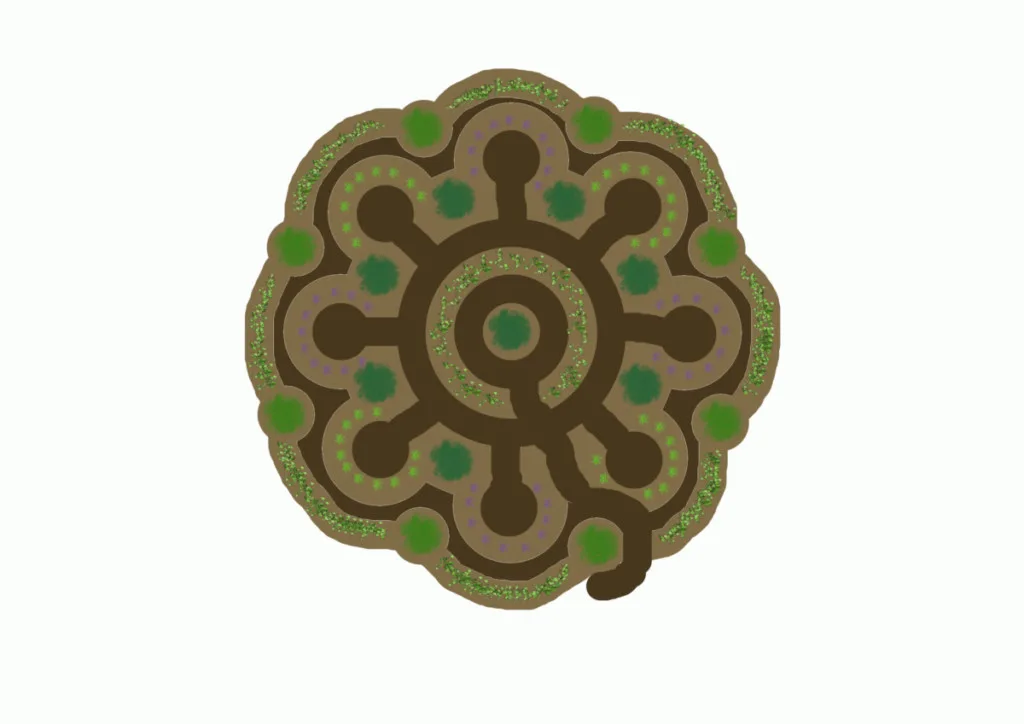
Many mandala gardens are more intricate in form. They often utilise the ideas of the keyhole bed, and can often incorporate a range of integrated keyhole beds in the design.
Check out the article on raised bed ideas to find more suggestions relating to garden bed shape and design.
Keyhole Garden Bed Designs and Ideas @ familyfoodgarden.com.
Floral Form Mandala Garden
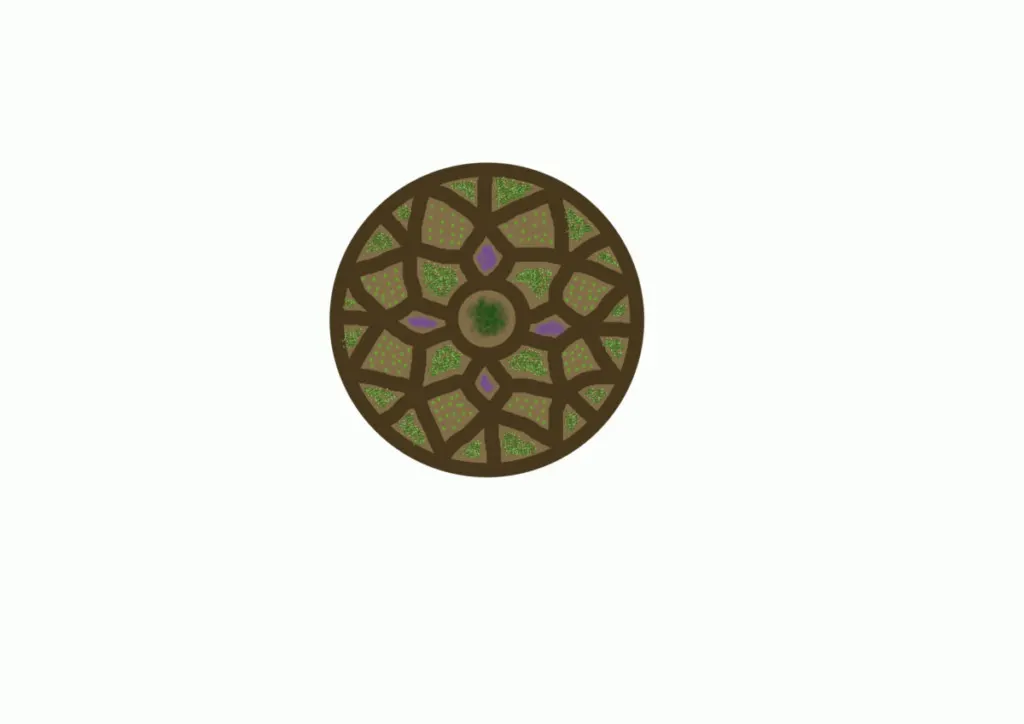
Another way to form a more intricate mandala garden is to think about how you can interlace paths and growing spaces to create a floral form.
The image above shows one example of a potential layout for a floral form mandala garden.
Here is one beautiful example:
Mandala Garden @ pinterest.co.uk.
Positioning a Mandala Garden
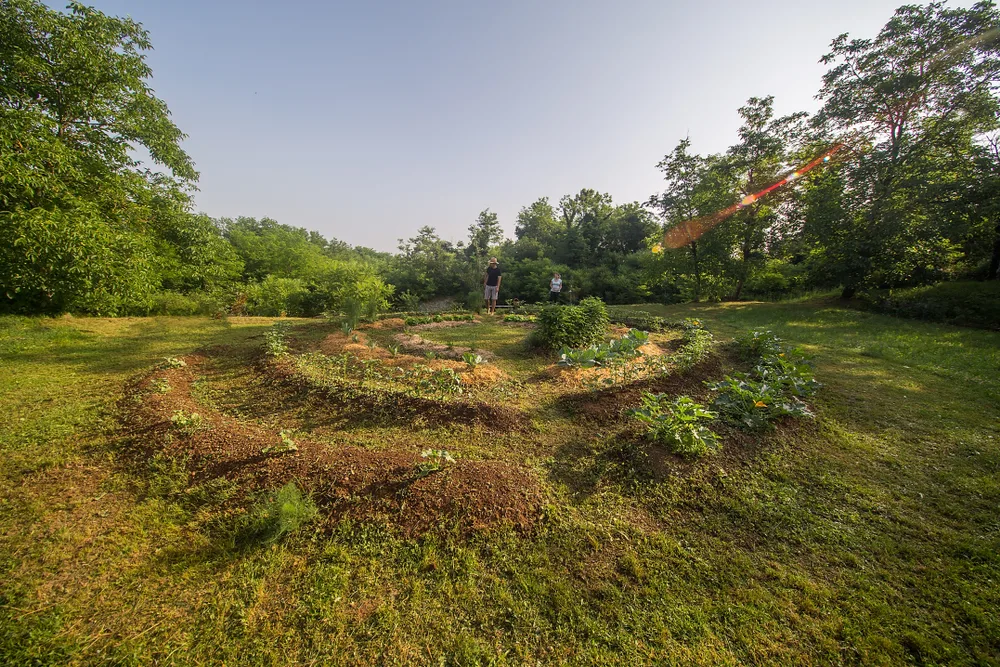
The first thing to mention is that a mandala garden is generally only a good idea in relatively flat, sunny areas of land.
A circular form is not necessarily going to offer the best use of space from the point of view of yield. However, thinking outside the box can sometimes help to increase the amount that can be grown in a given area.
It is important to think about the exact circumstances of where you live before deciding to implement one of these designs.
Remember, often the designs will require access around the outside of the circular shape, as well as access to the centre. Be sure to position your garden so you can reach all the areas relatively easily.
Another important thing to consider when planning your mandala garden is which plants you plan to grow, and where you intend to place them. Be sure to take plant needs into account. And think about sunlight, water, wind etc. when designing your garden layout.
Creating a Mandala Garden
If you’ve decided to create a mandala garden where you live, you are no doubt eager to get started. So now, let’s turn our attention to the process of creating a mandala garden:
Choose a Layout
The first stage in the process is, of course, to choose a layout. It is a good idea to make some sketches and to think not only about the layout of paths and growing areas but also about which plants you will choose to include in the design and where you will place them.
Remember, mandala gardens can be very versatile, not only in terms of their size and appearance, but in how you can use them. Think carefully about what you will grow in your mandala garden. The needs and requirements will be very different for different types of growing.
For example, you might use a mandala garden to grow trees, shrubs and herbaceous perennials. A perennial garden can be a great low-maintenance option. And there are plenty of edible perennials that you could grow, as well as plenty of beautiful flowering and ornamental plants.
More intensively managed mandala gardens could also be used to grow annual fruits, vegetables and herbs. Annual growing usually involves more work as a gardener. But a mandala garden can be ideal for organic gardeners who want to create thriving polycultures on their properties.
When choosing your layout, be sure to take which plants you will be growing, and how intensively the garden will be managed, into account.
Decide Whether To Make Raised Beds Or To Grow in The Ground
One key decision to make early on when planning your mandala garden is whether you will create raised bed growing areas, or grow at ground level.
Whether raised beds are right for you will depend, at least in part, on the type and characteristics of the soil in your area. And also on your own personal preferences and requirements.
I would strongly recommend considering implementing no dig gardening methods to protect and enhance the soil. This means creating your growing areas through sheet mulching/ making lasagna beds, or making a series of hugelkultur mounds.
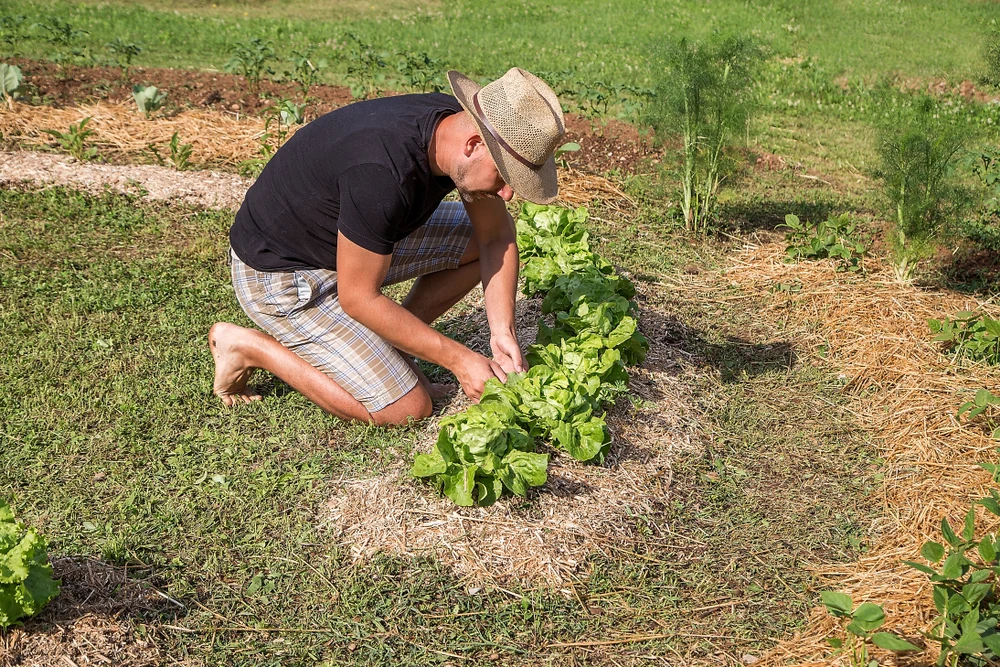
Mark Out Your Design
Once you have a good idea of your layout, and where you will place your plants, make some sketches. Sketches will help you to make sure your ideas can be brought to life more or less as you imagine them.
Next, it is time to transfer that design to the ground. The first job in actually creating your mandala garden is marking out your design.
- Put a stake in the ground at the centre of the circular shape you want to create.
- Tie a string to this stake, and, holding the string taut, walk in a circle. Use stones as markers, or sprinkle flour or something similar to create the circle design. You could also use a spade or another sharp tool tied to the string to mark a groove in the ground around the outer boundary. The string will help you keep to an even circular shape.
- Next, using this outer marking as a guideline, begin to mark out the beds and pathways. Again, you can use stones as markers, mark a line with flour or by making a groove, or lay out string lines to mark the beds.
Create Bed Edging & Pathways
Once you have marked out your design, it is time to put pathways and any bed edging you have decided to use in place.
There are a number of different materials that you could consider using. But for an eco-friendly and sustainable design, you should consider using either entirely natural materials (perhaps even ones that can be gathered on site) or reclaimed materials.
Make the Growing Areas
I would strongly recommend considering implementing no dig gardening methods to protect and enhance the soil. This means creating your growing areas through sheet mulching/ making lasagna beds, or making a series of hugelkultur mounds.
Plant Up Your Mandala Garden
Once your paths and growing areas are all in place, all that remains is to populate your mandala garden.
You can choose your plants carefully to optimise the use of space, to create a beautiful design, and to meet your needs. Remember to keep the planting as diverse as possible in order to achieve the best results.

Get the famous Rural Sprout newsletter delivered to your inbox.
Including Sunday musings from our editor, Tracey, as well as “What’s Up Wednesday” our roundup of what’s in season and new article updates and alerts.


